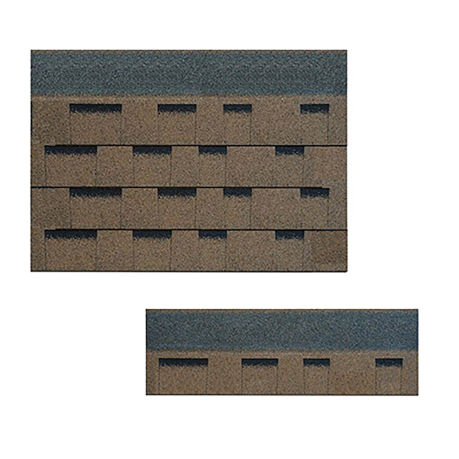
Nov . 10, 2024 20:24 Back to list
Understanding Granule Loss in New Roofing Shingles and Its Impact on Longevity
Addressing Granule Loss on New Shingles Causes, Implications, and Solutions
Granule loss on new shingles is a critical issue that can significantly impact the performance and longevity of roofing systems. As homeowners invest considerable resources into replacing their roofs with new shingles, understanding the causes and consequences of granule loss is essential for making informed choices. This article aims to explore the reasons behind granule loss, its implications for roofing performance, and potential solutions to mitigate this problem.
Understanding Granule Loss
Shingles are typically coated with granules—tiny, pebble-like materials made from crushed stone or ceramic that serve both decorative and functional purposes. These granules protect the underlying asphalt from harmful ultraviolet (UV) rays, reducing the risk of premature degradation. Granules also provide a textured surface that improves the shingle's ability to shed water.
However, during or after the installation of new shingles, homeowners might notice granule loss. This phenomenon can manifest as visible bald spots on the shingles, a significant increase in granules in gutters, or a noticeable reduction in the overall aesthetic appeal of the roof.
Causes of Granule Loss
1. Manufacturing Defects Occasionally, granule loss can occur due to defects during the manufacturing process. Poor adhesion between the granules and the asphalt can lead to premature shedding, especially if quality control measures are not adequately enforced.
2. Weather Conditions Harsh weather conditions, such as heavy rain, hailstorms, or high winds, can accelerate granule loss. Impact from hailstones can dislodge granules, while strong winds can lift and shift shingles, compromising their integrity.
3. Improper Installation If shingles are not installed correctly, it can lead to premature wear and tear. Factors such as inadequate sealing, poor fastening, and incorrect overlaps can cause shingles to lift, exposing their edges and increasing the likelihood of granule loss.
4. Age and Wear Even new shingles can suffer from granule loss if they are exposed to extreme temperatures or environmental stressors. Over time, the natural wear and tear can also contribute to the detachment of granules.
5. Maintenance Practices Lack of maintenance can exacerbate granule loss. For example, neglecting to clear debris from the roof can lead to water pooling, which can saturate the shingles and promote deterioration.
Implications of Granule Loss
granule loss on new shingles

The implications of granule loss can be significant. When granules are lost, the underlying asphalt becomes exposed and vulnerable to UV radiation, leading to quicker degradation and a reduced lifespan of the shingles. This exposure can cause the shingles to become brittle, crack, and ultimately fail, resulting in leaks and water damage to the underlying structure.
In addition to structural concerns, granule loss can also affect the energy efficiency of a home. Shingles that are compromised are less effective at reflecting sunlight, which can lead to increased cooling costs during hot summer months. Additionally, the aesthetic appeal of the roof may diminish, potentially impacting property value.
Solutions and Prevention
To address and prevent granule loss, several proactive steps can be taken
1. Quality Assurance Homeowners should choose shingles from reputable manufacturers with established quality control processes. Researching warranties and customer reviews can help ensure a sound investment.
2. Professional Installation Hiring experienced and licensed roofing contractors can minimize the risk of improper installation, which is a common culprit of granule loss.
3. Regular Maintenance Conducting routine roof inspections and maintenance can help identify early signs of granule loss. Clearing debris and addressing minor issues promptly can prevent major problems down the line.
4. Weather Preparedness Installing impact-resistant shingles and ensuring proper ventilation can help roofs withstand extreme weather conditions, reducing the chances of granule loss.
5. Education Homeowners should educate themselves about the signs of granule loss and maintain open communication with roofing professionals to recognize potential issues early.
Conclusion
Granule loss on new shingles is a concern that can have significant consequences for the longevity and performance of a roof. By understanding the causes, implications, and potential solutions, homeowners can take proactive steps to protect their investment and ensure their roofs remain durable and effective for years to come. Investing in quality materials, professional installation, and regular maintenance can go a long way in preventing granule loss and maintaining the integrity of the roofing system.
-
Durable Tiles Made of Clay for Modern Cladding Solutions
NewsJul.22,2025
-
Stone Coated Roman Tile Metal Roofing - Durable & Elegant
NewsJul.22,2025
-
Premium Roofing Granules for Sale - High Durability & Cost-Saving
NewsJul.21,2025
-
Durable Laminated Shingles for Weather-Resistant Roofing
NewsJul.21,2025
-
Rubber Roofing Shingles - Durable & Weatherproof SBS Rubber Asphalt Shingles for Homes & Businesses
NewsJul.08,2025
-
Crest Double Roman Roof Tiles – Durable, Stylish Roofing Solution at Competitive Prices
NewsJul.08,2025







